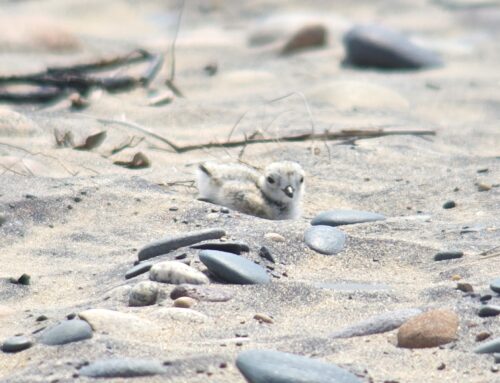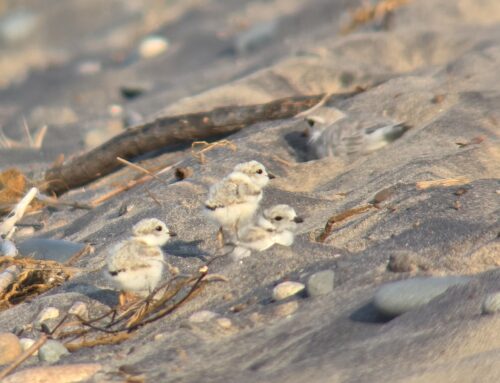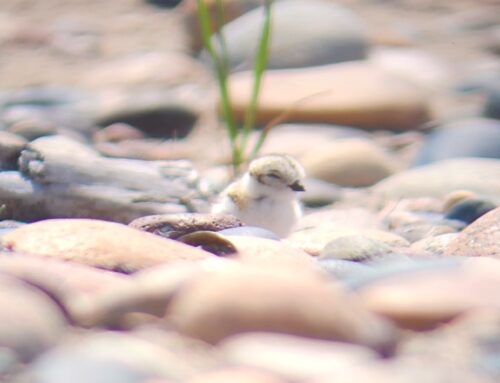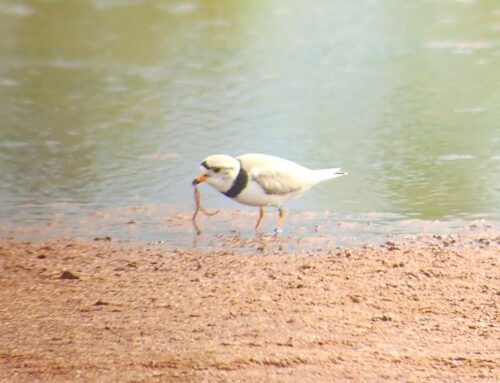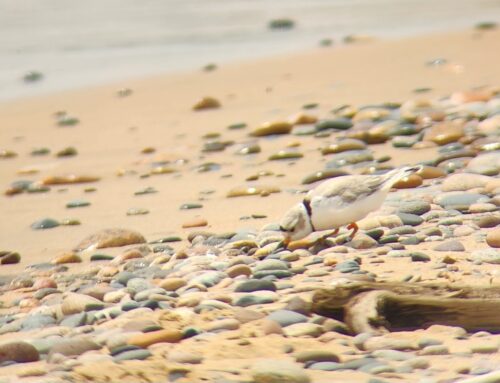The ephemerality of the shoreline at Whitefish Point is subtle, except to those who spend significant time there. Every windy day takes away some beach in exchange for new driftwood deposits–but if you did not walk here regularly, this would be difficult to discern. The passage of shorebirds contributes a further element to the changeability of the WPBO beach: when I arrive for a shift of Piping Plover sitting, the aggregate of sandpipers and plovers there hardly ever remains congruent till my departure. This, too, is subtle–though I have spent more waking hours at Whitefish Point’s beach than I have anywhere else this year, there was a window in June when it was a tough call whether Least Sandpipers were headed north or headed south.
Shorebirds have, within their species, a staggered post-breeding migration. The individuals whose nests fail return south first–in most instances, arctic summer is too short to sustain a renesting. After these come adult birds who have left their chicks, not yet capable of migratory flight. This move feels a bit unconventional, but shorebird chicks are precocious: they hatch ready and able to feed themselves, and require much less parental care than the chicks of many other bird species. By leaving, the adults lessen the pressure on food resources their developing chicks need. In some species of shorebird, like the Piping Plovers occupying the WPBO beach, the female departs her breeding grounds before the male does, adding yet another stage to this protracted fall migration.
The summer’s chicks are the last wave of shorebirds to move through in fall, their plumage fresh, bright, and beautiful, and a delight to all who encounter them. It never ceases to amaze me that these young birds embark on their first migrations–some of which are transcontinental or even transoceanic–without the accompaniment of adults who have flown the route before.

Small flock of southbound Sanderling at Whitefish Point beach. Alison Vilag photo.
But we’re not yet at the juncture of season where we can expect numbers of juvenile shorebirds. That’s about a month out. Right now, the birds moving through are adults, and the first I noticed this southward trickle was June 27, when I saw a Sanderling on the beach. Then, a Least Sandpiper turned up and then, there were three Leasts and a Semipalmated Plover. In the past week, those numbers have built to a dozen Leasts, a dozen Sanderlings, and scatterings of other species. The crazy thing about this is that the last day I saw shorebirds (a Whimbrel, a Ruddy Turnstone, and 4 Semipalmated Sandpipers) moving north was just two weeks prior that first southbound Sanderling. In case anyone is curious (I was!), the first day this spring I saw a shorebird species that does not nest in Michigan was April 22 (Greater Yellowlegs), and the final day last fall I recorded a migratory shorebird at WPBO was November 2 (Dunlin).
So at WPBO right now, it is midsummer by appearance, but, with investigation, you’ll find fall migration’s overtures: periodically, I jump into Superior to shake the heat and flies, and while I’m swimming around in what feels like the height of summer, I hear the breeeeep! of a Least Sandpiper slipping by overhead. I wonder over all it might have experienced in the short time its species was absent our beach. It has, perhaps, flown hundreds of miles, seen ecosystems I’ve only dreamt of–and, hopefully–contributed to a new generation of its species.
Thank you for reading!
-Alison Vilag, WPBO Piping Plover Monitor & Outreach Specialist (Feature photo: monarch butterfly, Alison Vilag.)

Caspian Terns are welcome summer regulars at Whitefish Point. Alison Vilag photo.


